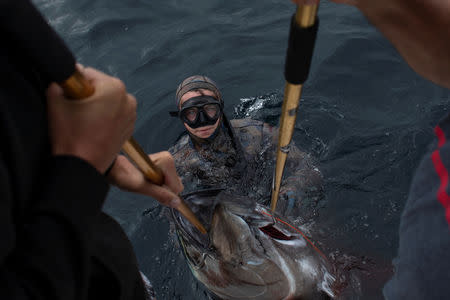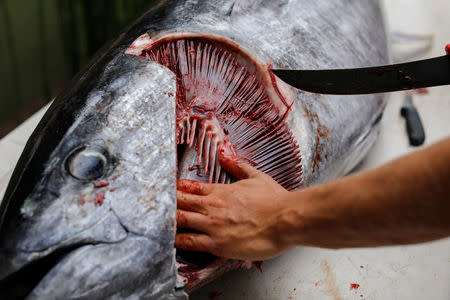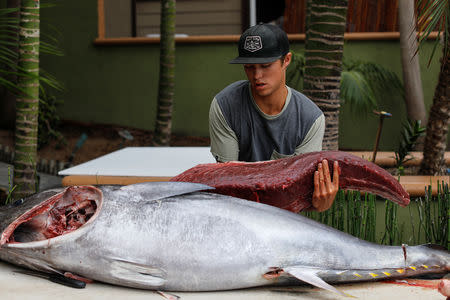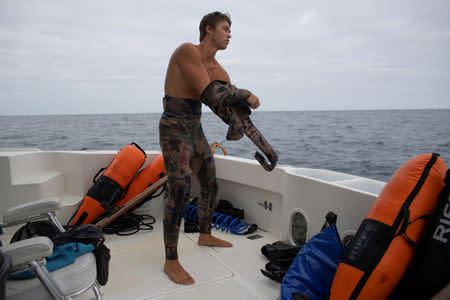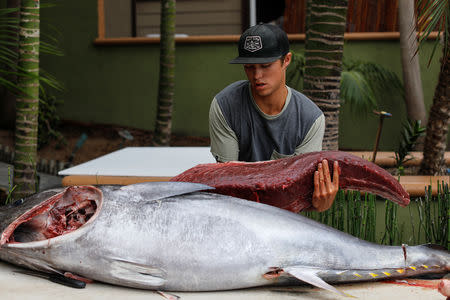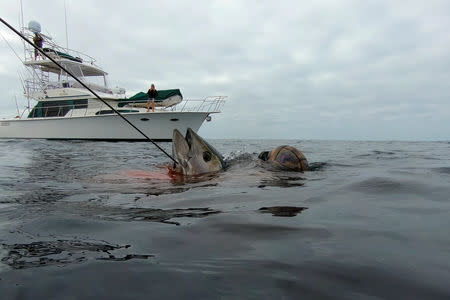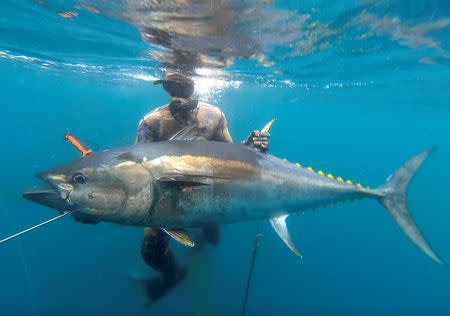Big bluefin tuna make comeback after 80-year hiatus off California coast
SAN DIEGO (Reuters) - Large Pacific bluefin tuna not seen in California waters for decades have reappeared, to the delight of fishing enthusiasts and scientists, as global conservation efforts have proven effective for one of the ocean's priciest and most sought-after fish.
Overfishing of bluefin tuna spurred by a growing global appetite for sushi resulted in a critical decline in stocks over decades. But measures by the United States, Japan, Mexico and others to limit their take have led to population growth, though tuna populations are still below historic levels.
Gerard DiNardo, director of the Fisheries Resources Division at Southwest Fisheries Science Center, a division of the U.S. National Oceanic and Atmospheric Administration (NOAA) in La Jolla, California, said there has been an increase in population as well as size of the bluefin because of those efforts.
"This is management and effective management and it actually is working'" said DiNardo.
The Center for Biological Diversity said in August 2017 that the Pacific bluefin had been overfished to less than 3 percent of its historic population. The National Marine Fisheries Service announced in October 2016 that it was considering listing the Pacific bluefin, but it subsequently concluded that protections were not warranted.
Record-breaking temperatures in San Diego this past summer and the warming of the ocean off the California coast provided a feeding ground for the bluefin, which can sell for hundreds of thousands of dollars. In early January, an 890-pound (403.7 kg) bluefin fetched $323,000 at the Tsukiji fish market in Tokyo.
"They're here to feed," said Heidi Dewar, a fisheries research biologist at the Southwest Fisheries Science Center. "If we want to understand the dynamics of what's going on here... we really need to look at what they're feeding on."
Scientists said there have been discussions within the fishing community for years about the seeming disappearance of the fish.
But DiNardo said, "They've always been here. It's just that they've been in low numbers for a number of decades."
Local sport fisherman have welcomed their resurgence.
"When the bluefin went away our sexy fish became the sword fish and striped Marlin,' said John Talsky, manager of the Tuna Club of Santa Catalina Island. "But now that the bluefin is back, we have had to change the rules for all of our tournaments. It’s a wonderful problem to have."
In early September, Ryder Devoe, 19, who dives to spear big game fish, emerged from the deep blue waters 68 miles off the California coast in his camouflaged wetsuit, shouting: "I think I got him." Devoe had speared a 200-pound bluefin as a school swam 60 feet below.
“With a rod and reel you can’t catch them if they aren’t hungry," said Ed Heller, Devoe's boat captain. "But they will always eat a spear.”
(Reporting by Mike Blake; Writing by Diane Craft; Editing by Dan Grebler)


